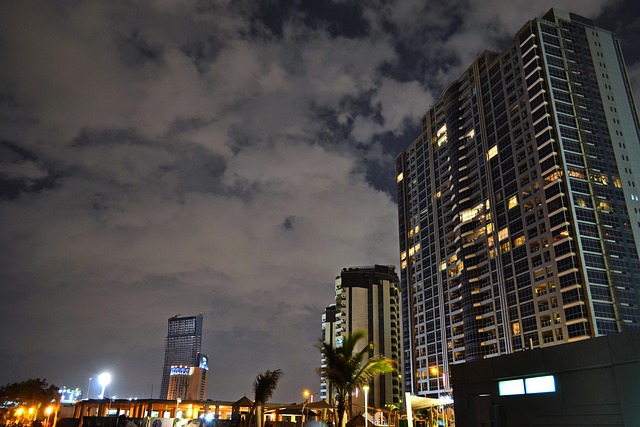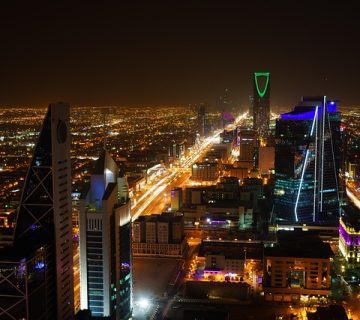This article outlines the core differences between the old and new systems governing Non-Saudi property ownership in the Kingdom of Saudi Arabia. It confirms that the updated 2025 framework aligns with Saudi Vision 2030 to stimulate foreign investment.
The new system expands who may own property to include individuals, non-profit entities, foreign companies, and diplomatic missions—rather than limiting ownership to resident non-Saudis and diplomatic missions under the old rules.
It also allows ownership of all property types and introduces designated geographic zones for ownership, with special restrictions in Makkah and Madinah where ownership is limited to Muslims and to Saudi companies within defined areas. The updated system does not conflict with the Premium Residency Law or with the rules for GCC citizens; it will take effect in January 2026, offering Premium Residency holders broader Non-Saudi property ownership rights across the Kingdom.
First: Key Differences Between the Old and New Systems for Non-Saudi Property Ownership
In line with the Kingdom’s rapid economic and investment growth, the updated system for Non-Saudi property ownership regulates real-estate ownership rights for individuals and companies—inside and outside the Kingdom—and replaces the previous system issued in 1421 AH (2000). It aims to spur foreign investment, increase housing supply, and support national development in step with Saudi Vision 2030.
1) Who may own property in Saudi Arabia in 2025?
Old system (1421 AH / 2000):
- Non-Saudi individuals and investors residing in the Kingdom.
- Accredited diplomatic missions in the Kingdom and regional organizations.
Updated system (1447 AH / 2025):
- Individuals.
- Non-profit entities.
- Non-Saudi companies.
- Diplomatic missions.
- Saudi companies with foreign ownership participation.
Read also about the new Saudi investment law for foreigners.
2) What property types are allowed under the update to Non-Saudi property ownership?
Old system (1421 AH / 2000):
- Allowed investors to own property necessary for conducting business and for their own housing and the housing of their employees.
- Allowed resident non-Saudis to own property for their private residence.
Updated system (1447 AH / 2025):
- Permits ownership of all types of properties.
3) Geographic limits under the updated Non-Saudi property ownership rules
Old system (1421 AH / 2000):
- All regions of the Kingdom except Makkah and Madinah.
Updated system (1447 AH / 2025):
- Ownership is allowed within designated areas according to the Geographic Zones Document, which specifies all locations open to ownership and real rights in property.
4) Ownership in Makkah and Madinah under the Non-Saudi property ownership framework
Old system (1421 AH / 2000):
- No ownership allowed—use (usufruct) only.
Updated system (1447 AH / 2025):
- Allows ownership and usufruct for Muslims only and for Saudi companies within zones defined by the Geographic Zones Document.
The text of the new law also states that applying the updated system for Non-Saudi property ownership does not prejudice the provisions of the Premium Residency Law or the regulations governing property ownership by GCC citizens for housing and investment, nor any other current laws that grant foreigners better rights regarding ownership or acquiring other real rights over property. Likewise, ownership by a foreigner does not confer any rights or privileges beyond those accorded by law to a holder of a real right.
Second: What Does the Updated System for Non-Saudi Property Ownership Mean for Premium Residency?
- A Premium Residency holder may own property in Saudi Arabia as an individual; in addition, non-profit entities, non-Saudi companies, diplomatic missions, and Saudi companies with foreign participation are eligible to own under the updated system.
- The updated framework allows a Premium Residency holder to own regardless of property type.
- It grants a Premium Residency holder the right to own across all regions of the Kingdom, subject to limits set out in the Geographic Zones Document, including specific restrictions in parts of Madinah and Makkah.
- It further allows Muslim Premium Residency holders and Saudi companies to own and enjoy usufruct within designated zones in those two cities.
Effective date: The updated system for Non-Saudi property ownership will enter into force in January 2026.
FAQs
1) Does the new system allow a Premium Residency holder to own property in Makkah and Madinah?
Yes, but with specific restrictions. Ownership and usufruct in Makkah and Madinah are limited to Muslim Premium Residency holders or through Saudi companies, and only within designated geographic zones.
2) What is the difference between the old and updated systems regarding property types?
The old system limited ownership to property for residential use or business activity. The new system allows ownership of all property types without exception, enhancing real-estate investment opportunities for Non-Saudi property ownership.
3) When does the new system for Non-Saudi property ownership take effect?
Implementation will begin in January 2026, giving foreign investors time to prepare and review the approved Geographic Zones Document.
4) Must a foreign company have a Saudi partner to own property in Saudi Arabia?
No. The new system allows foreign companies to own property directly, whether wholly foreign-owned or in partnership with a Saudi entity—broadening international investment in line with Non-Saudi property ownership reforms.
5) Can foreign non-profit entities own property in the Kingdom?
Yes. The updated system permits non-profit entities—local or foreign—to own property, subject to the conditions and controls specified in the Geographic Zones Document.
6) What is the Geographic Zones Document and how can it be obtained?
The Real Estate General Authority will publish the Geographic Zones Document for Non-Saudi property ownership after it is approved by the Council of Ministers. It will include the ownership zones in Riyadh, Jeddah, Makkah, Madinah, and all cities and governorates across the Kingdom. The document contains maps of specific locations with details on permitted percentages, types of real (in rem) rights, permitted areas, and the controls applicable to Non-Saudi property ownership or the acquisition of real rights over property.
BY Amjad Khaddam




